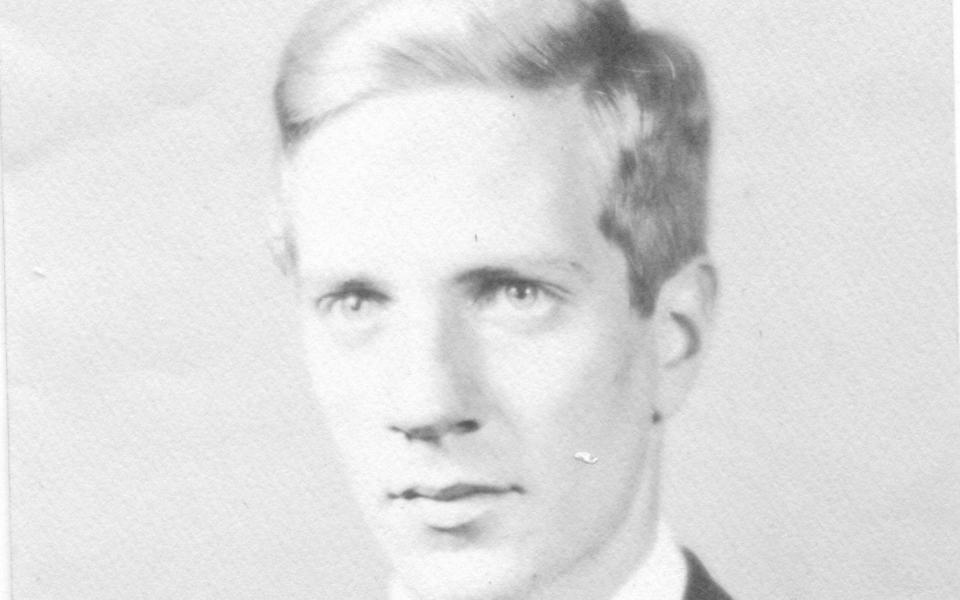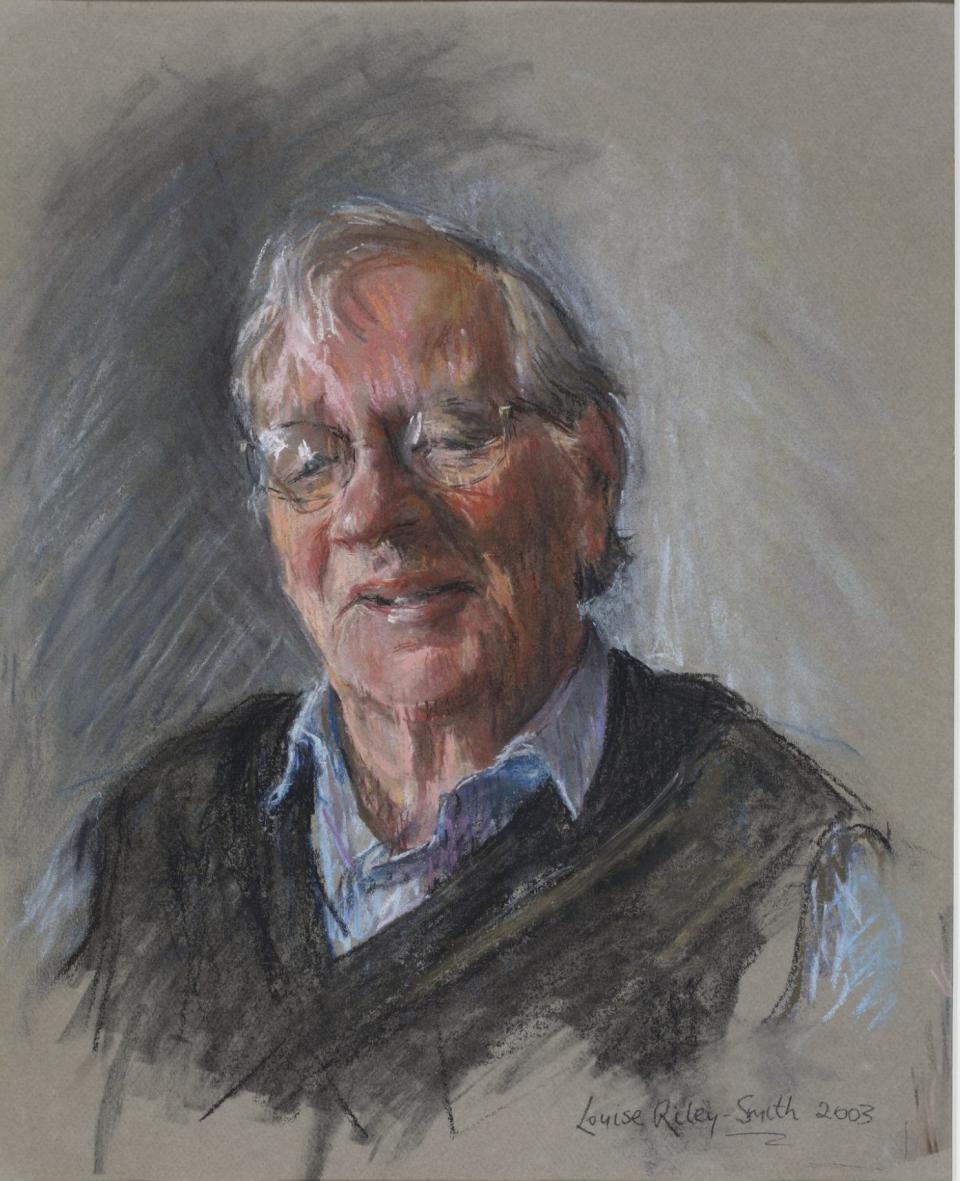Professor Horace Barlow, neuroscientist who did groundbreaking work on visual perception – obituary

Professor Horace Barlow, a great-grandson of Charles Darwin, who has died aged 98, was a pioneering visual neuroscientist.
In the early 1950s little was known about vision except that the eyes formed images, and that nerves carried electrical impulses created by those images to the brain, which somehow made sense of them.
In the early 1950s, at Cambridge University’s Physiological Laboratory, Barlow began recording electrical signals from single nerve cells in the retina of frogs and discovered that certain cells would “fire” impulses when they detected particular configurations of visual elements (“trigger features”), and that these features related to the frogs’ survival. For example, these cells would fire when they saw something resembling a fly, but not otherwise.
Nerve cells, he suggested, are wired to detect essential features of the frog’s visual world, such as a small moving insect. The nervous system filters natural stimuli to preferentially encode the information that is most relevant to behaviour.
Barlow went on, in 1961, to propose what has become one of the most successful theoretical models of sensory systems – the Efficient Coding Hypothesis. This suggests that, given a finite capacity to transmit information, neural systems employ an “optimally efficient coding strategy” to minimise the number of nerve cells and nerve impulses needed to transmit a given signal to the brain.
The retina, therefore is much more than “the film in a camera”, but acts to reduce “redundant” information being passed to the brain.
The youngest of six children, Horace Basil Barlow was born on December 8 1921 at Chesham Bois, Buckinghamshire, with, as he put it, “a scientific silver spoon” in his mouth. His father Sir Alan Barlow 2nd Bt, was a civil servant, but his paternal grandfather Sir Thomas Barlow, 1st Bt, was physician to Queen Victoria’s household, and known for his research on infantile scurvy, which became known as Barlow’s disease.
His mother, Nora, née Darwin, was a granddaughter of Charles Darwin and a botanist who did scientific work on genetics with the biologist William Bateson. She was also instrumental in reviving Darwin’s reputation in the 20th century, publishing an unexpurgated version of his autobiography and editing several collections of letters.
When in 2008 the Church of England issued a formal apology to Darwin for misunderstanding his theory of natural selection, some family members dismissed the move as pointless, but Barlow was typically gracious. “Darwin was very concerned about offending other people as his wife Emma was a committed Christian,” he said, “so I think this apology would have pleased him.”
Barlow was educated at Winchester College, where his contemporaries included the theoretical physicist Freeman Dyson, the theoretical chemist and cognitive scientist Christopher Longuet-Higgins and the applied mathematician James Lighthill.

Following the outbreak of war, he went up to Trinity College, Cambridge, as a medical student, though he technically read Natural Sciences, which was the normal thing for medical students at Cambridge at the time.
He won a Rockefeller studentship to finish his clinical studies at Harvard Medical School, where he went after spending a year at the Medical Research Council’s lab in London at Mount Vernon, working on problems of diving in relation to the war.
It was at Harvard that, with two fellow medical students, he first carried out research on vision, publishing papers on the effect of magnetic fields on the eye and on dark adaptation and light effects on the electric threshold of the eye.
By the time he returned to Britain, although he completed his medical training at University College Hospital, London, it was clear that he wanted to continue as a research neurophysiologist, and he returned to Cambridge to study Neurophysiology under Edgar (later Lord) Adrian.
Barlow was a fellow at Trinity College (1950-54), and a Fellow and lecturer in Physiology at King’s College, Cambridge (1954-64). In 1964 he crossed the Atlantic to take up an appointment as Professor of Physiology at the University of California, Berkeley.
There he researched many aspects of the physiology and psychology of vision, much of it in collaboration with Bill Levick. Among other things, he discovered that certain retinal cells fire signals when light passes over them in one direction but not in the opposite direction – a discovery which stimulated enduring interest in the cellular mechanism behind this directional selectivity, which is now seen as the basis of motion perception.
Later, working with Colin Blakemore and Jack Pettigrew, Barlow discovered the brain’s mechanism of stereo vision by showing that signals from the two eyes converge on single cells in the visual cortex that respond to specific locations in 3D space.
In 1973 he returned to Cambridge, where he was Royal Society Research Professor of Physiology with a fellowship at Trinity College.
Soft-spoken, but resolute in his opinions and endlessly curious about the natural world, Barlow continued to write about the brain, working in his department and visiting Trinity well into his nineties. His definition of intelligence was “the art of good guessing”. He continued to be a presence at national and international meetings, taking great pleasure in meeting and educating younger scientists. He supervised the training of more than a dozen doctoral and postdoctoral students, and exerted a broad influence on thinking in the field through their influence as well as his own.
Barlow was elected a Fellow of the Royal Society in 1969 and was awarded the Society’s Royal Medal in 1993. In the same year he received the Australia Prize. He won the 2009 Swartz Prize from the Society for Neuroscience and the first Ken Nakayama Prize from the Vision Sciences Society in 2016.
Barlow married first, in 1954, Ruthala Salaman. The marriage was dissolved in 1970, and in 1980 he married, secondly, Miranda Weston-Smith, who survives him with their two daughters and a son, and four daughters from his first marriage.
Professor Horace Barlow, born December 8 1921, died July 5 2020

